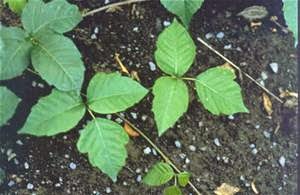Kid Smiles:
Melon Did It: Imaginary Friends, Stories and Lies, and Accepting Responsibility
I
knew a three-year old girl who, any time she did something she wasn’t supposed
to (which was fairly often), would announce, “Melon did it!” Melon, of course,
was her imaginary friend. Sometimes Melon was a good companion, engaging in
thoughtful conversation, but, most often, Melon was the scapegoat. Melon didn’t
seem to mind much.
I
also remember a four-year old boy who once broke something on the playground.
Even though he was the only one in the area, and despite the fact that a
teacher had actually seen him break the toy, when I asked him why he did that,
he said, “because....wait, I didn’t do it...” When I asked him who did do it,
he looked around, then innocently said, “how about Colby?” Now, ordinarily,
Colby would have been a viable suspect, but on this day, he wasn’t even at
school, giving him a solid alibi.
Both
of these memories make me smile. They are also both really good examples of the
way preschoolers will naturally try to negotiate the truth. It’s not
pathological lying (yet), it’s simply coming to a developmentally appropriate
understanding of the relationship between reality and fantasy. It’s also part
of the process of learning to accept responsibility for our actions and
behaviors.
It’s
sometimes difficult for adults to figure out how to respond to these narrative
explorations. We want to encourage imagination, and we often are amused by the
clumsy trek through the truth that preschoolers pursue. But while they are on
this journey, it’s important to help them recognize the difference between the
fun and positive use of imagination, and the problematic manipulation of truth
to deflect responsibility or to get what you want. There’s nothing wrong with
naming that difference, and naming it makes it easier for children as young as
three to understand: using imagination to tell stories (or to have imaginary
friends) is fine, as long as the people you’re telling them to know that
they’re stories, but making things up that you know are false and trying to get
others to believe you is lying. It really is that simple (but I’m sure we all
know some grown ups who still struggle with this concept).
Young
children lie for a variety of reasons. Probably chief among them is to deny
wrongdoing and get out of trouble (the function of Melon and Colby), but
children will sometimes lie just to see what happens, or to try to reconstruct
their world in ways that make them feel better. An example of the “just to see
what happens” tactic is the little girl who, with somber earnestness, told us
that her mother couldn’t come to pick her up that day because she had been in a bad car
accident and was in the hospital. We were all appropriately concerned and
confused, because we hadn’t heard anything about it, but things were cleared up
when Mom walked in the door that afternoon, safe and sound. When we asked the
girl why she told us that, she said, “I don’t know.” And she didn’t know. She
was trying it out. An example of a child reconstructing the world to make
himself feel better was the little boy who, after having experienced some
meaningful trauma, insisted on calling his adoptive parents “Nala” and
“Mufasa,” and wanted everyone to call him “Simba.” For this young boy, the
simple reality was that, for him at that moment in his life, reality was
challenging, and his healing involved a harmless construction of a world of
strength, perseverance, connection, and heroism to get him through. This lasted
for a couple of months, until we all recognized that reality was once again, for him, a safe place to be.
If
you value honesty and integrity, then you will help the children in your life
understand why those concepts are important. Adults will often excuse lying as
“harmless fantasy,” or with the belief that children “are just too young to
know any better.” If children are old enough to have the vocabulary to create
stories, they are old enough to begin to understand morality and ethics, and
the difference between lying and storytelling. But the only way they can learn
the social significance of these concepts is if adults take the time to name
the problem, set clear and consistent expectations and consequences, and
explain what the choices are. One of the best books to help children (ages four and up) with this
concept is Evaline Ness’s Sam, Bangs, and
Moonshine. This book tells the story of a little girl, Sam, whose elaborate
stories ultimately cause serious injury to her best friend, Thomas, and to her
cat, Bangs. Sam’s stories begin as a way to help her cope with the loss of her
mother, but evolve into an escape from reality that is no longer healthy for
her or for those around her. Her father explains to her the difference between
“real” and “moonshine,” and helps her to accept responsibility for the
consequences of her actions.
And
that really is the point: Sam’s father doesn’t discourage her from telling
stories, but insists that she be clear with others (and with herself) that she
is making it up. Similarly, we welcomed Melon at school, but insisted that she not
be blamed for her friend’s behavior. It was only fair.

